#6 in Vietnam
Popular Cơm Tấm Variations
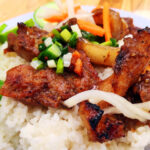
Cơm Tấm Sườn
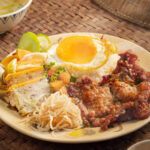
Cơm Tấm Sườn Bì Chả Trứng
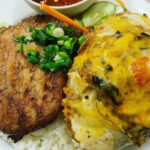
Cơm Tấm Chả Cua
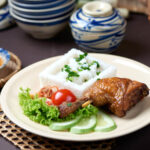
Cơm Tấm Gà Nướng

Cơm Tấm Long Xuyên
Cơm Tấm: Ingredients and Preparation
Main Ingredients
Main Cooking Method
Preparation Process
Cơm Tấm: A Deep Dive
Cultural Significance
Taste
Texture
Aroma
Color
Serving Style
Serving Temperature
Accompaniment
- Cucumber Slices
- Tomatoes
- Soup Broth
Occasions
Seasons
Special Diets
Calories
Popularity
Popular Similar Dishes
- Bibimbap
- Donburi
- Arroz con Pollo
Popular Dining Area
Cơm tấm is a Vietnamese dish originating from the southern part of the country, particularly notable in Saigon. The dish is centered around “tấm,” which refers to broken or fractured rice grains, while the term “cơm” signifies cooked rice in Vietnamese.
Traditionally, cơm tấm was the food of rice farmers who utilized the broken grains that were not fit for sale during difficult seasons.
Over time, as the urban population grew, the dish became popular across various social classes. It is now a common meal that can be enjoyed at any time of the day, including breakfast, lunch, or dinner.
The dish is typically accompanied by a variety of toppings, such as grilled pork (sườn), shredded pork skin (bì), and a steamed egg patty (chả). It’s often garnished with pickled vegetables and scallion oil.
A key component that brings the dish together is a drizzle of nước mắm tỏi ớt, a Vietnamese dipping sauce that is sweet, sour, and savory.
Let me guide you through the characteristics, history, evolution, key ingredients, different versions, side dishes, best places to sample, advantages and disadvantages, frequently asked questions, and dishes akin to this one.
Key Points
Cơm Tấm Images
When Was Cơm Tấm Invented?
Com Tam, also known as Vietnamese broken rice, originated as a dish among the rice farmers in the Mekong Delta of Vietnam. It was a creation born out of necessity; during difficult rice seasons, farmers often found themselves with an insufficient amount of unbroken rice to sell.
To make use of the broken rice grains, which were a byproduct of the rice milling process and considered less desirable, they cooked them for personal consumption. This practice allowed them to utilize what was readily available in their homes and provided them with sustenance that could last for extended periods.
How Cơm Tấm Developed?
The dish evolved and gained popularity, particularly in Southern Vietnam and Saigon (now Ho Chi Minh City), during the urbanization of Vietnam in the first half of the 20th century.
As the city became a bustling hub, attracting people from various countries, the dish was adapted to cater to a wider range of tastes, which included the addition of ingredients like grilled pork and egg. The way it was served also changed, with plates and forks replacing the traditional bowls and chopsticks.
Today, Com Tam is a beloved dish in Vietnam, especially in Saigon, and it’s considered a cultural staple, reflecting the city’s culinary heritage. Thus, the journey of Cơm Tấm showcases broken rice as the fundamental element that has remained a constant in this cherished dish.
What Are The Main Components of Cơm Tấm?
Essential components for Cơm Tấm include the following:
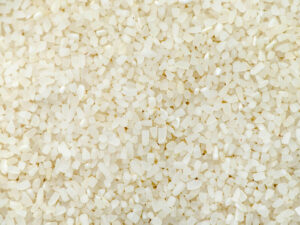
Broken Rice
Often used as an economical food option in various regions, particularly West Africa and Southeast Asia.
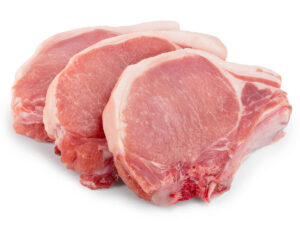
Pork Chops
Pork chops seasoned and cooked on a grill.
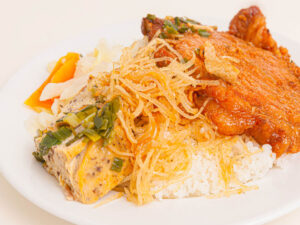
Shredded Pork Skin
A combination of shredded pork and pork skin, flavored with roasted rice powder.
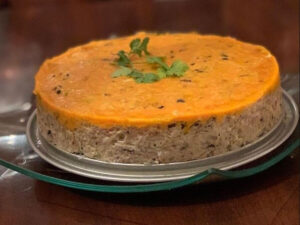
Egg Meatloaf
A traditional Vietnamese steamed egg dish with meat, which can also be replaced by an omelet or fried egg in modern versions.
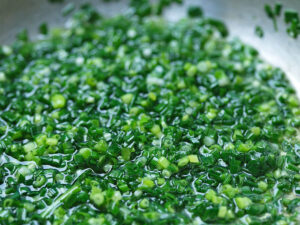
Scallion Oil
Scallion sautéed in hot oil until tender, used as a topping.
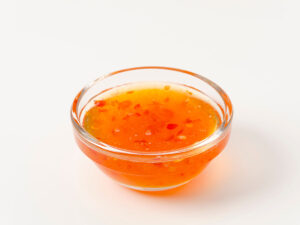
Nước Mắm Tỏi Ớt (Vietnamese Dipping Sauce)
A condiment made with fish sauce, often customized with a balance of sweetness, sourness, saltiness, and spiciness to enhance the flavor of the dish.

Pickled Vegetables
Typically includes carrots and daikon radish, adding a tangy and sweet crunch to the meal.
Understanding these fundamental elements not only highlights the traditional essence of Cơm Tấm but also sets the stage for exploring its myriad variations.
What Are Cơm Tấm Variations?
Cơm tấm has 7 most famous variations, each with unique ingredients and preparations:

Cơm Tấm Sườn
Broken rice with grilled pork chop.
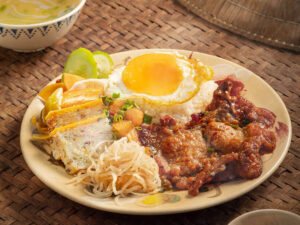
Cơm Tấm Sườn Bì Chả Trứng
Broken rice with grilled pork chop, shredded pork skin, steamed pork and egg custard, and a sunny-side-up egg. Chinese sausage is also a popular topping besides the toppings mentioned.
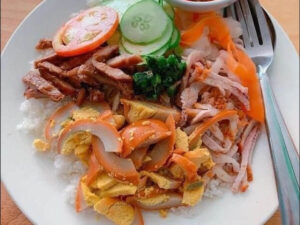
Cơm Tấm Long Xuyên
A local specialty from Long Xuyên city featuring fine broken rice. It’s served with finely chopped grilled pork, pork skin, pickled veggies, and caramelized egg.
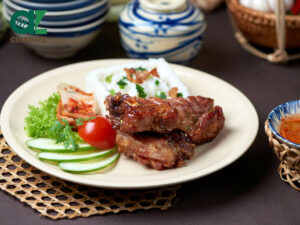
Cơm Tấm Sườn Que
Broken rice with grilled pork ribs.
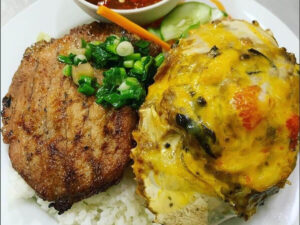
Cơm Tấm Chả Cua
Broken rice with Vietnamese crab meatloaf.

Cơm Tấm Gà Nướng
Broken rice with grilled chicken.
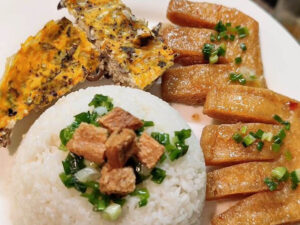
Cơm Tấm Chay
A vegetarian version of broken rice, usually with tofu or mock meats as protein substitutes, served with vegetarian fish sauce.
These variations not only highlight the versatility of Cơm Tấm but also underscore the importance of its accompaniments, which play a crucial role in defining the distinct flavors and textures of each unique version.
What to Serve with Cơm Tấm?
Here are some traditional items you can serve with cơm tấm:

Cucumber Slices
Fresh cucumber provides a cool and crisp contrast to the rich flavors.
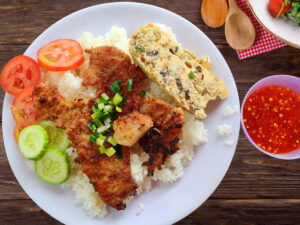
Tomatoes
Fresh or lightly pickled tomato slices add acidity and freshness.
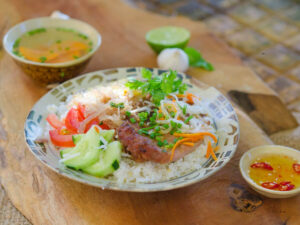
Soup Broth
A light vegetable or meat broth often accompanies the meal to cleanse the palate.
Alongside these traditional accompaniments, experiencing Cơm Tấm in its authentic context at local Vietnamese eating places offers a deeper appreciation and understanding of this dish.
Where to Try Cơm Tấm?
Check out these popular eateries for Cơm Tấm in Ho Chi Minh City and Hanoi:
In Saigon (Ho Chi Minh City)
Cơm Tấm Ba Ghiền
Address: 84 Dang Van Ngu, Phu Nhuan District, Ho Chi Minh City
Cơm Tấm Phúc Lộc Thọ
Address:
236 Dinh Tien Hoang, District 1, Ho Chi Minh City
256 Nguyen Duy Trinh, Thu Duc City, Ho Chi Minh City
538 Nguyen Thi Minh Khai, District 3, Ho Chi Minh City
Cơm Tấm Bụi Sài Gòn
Address:
100 Thach Thi Thanh, District 1, Ho Chi Minh City
378 Le Van Luong, District 7, Ho Chi Minh City
172C Dien Bien Phu, Binh Thanh District, Ho Chi Minh City
In Hanoi
Cơm Tấm Sà Bì Chưởng
Address: 86 Nguyen Van Tuyet, Dong Da, Hanoi
Cơm Tấm Tư Mập
Address: 241 Thuy Khue, Thuy Khue, Tay Ho, Hanoi
Cơm Tấm 36
Address: 11 Phung Hung, Hoan Kiem, Hanoi
Visiting these recommended venues provides an excellent opportunity to not only savor the flavors of Cơm Tấm but also to weigh the pros and cons of this delicacy.
Pros and Cons of Eating Cơm Tấm
Here are some advantages and disadvantages of cơm tấm:
Pros
Cons
Moreover, the FAQs section is not to be missed for extra clarity.



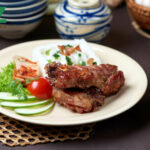
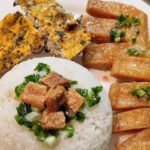
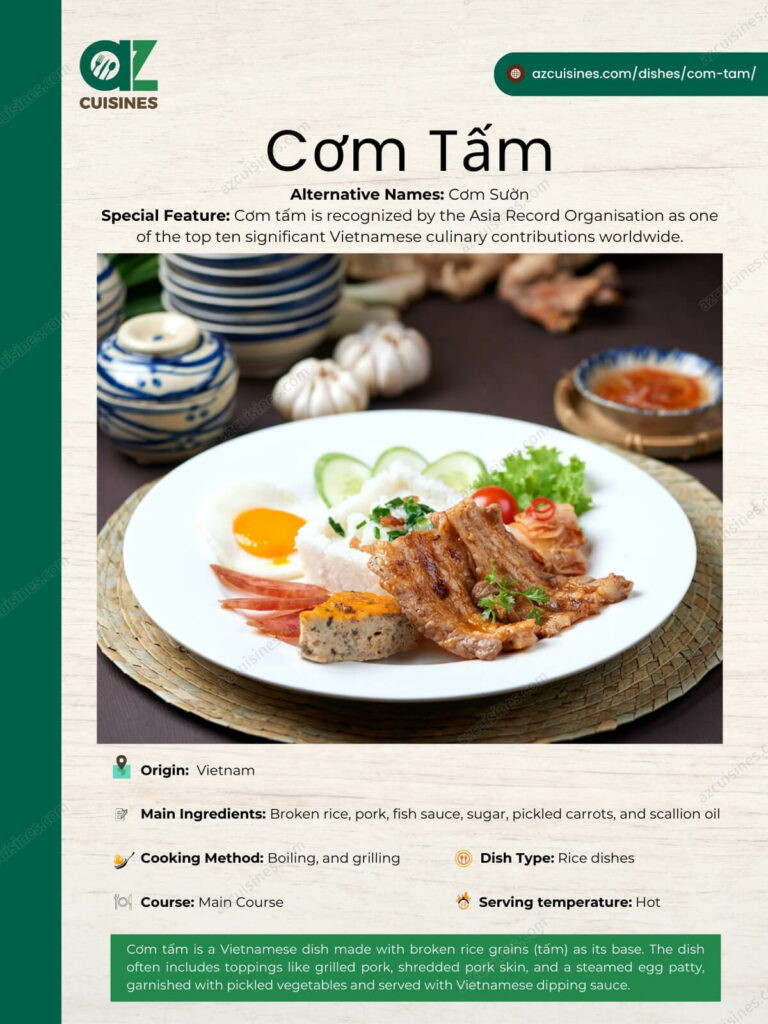
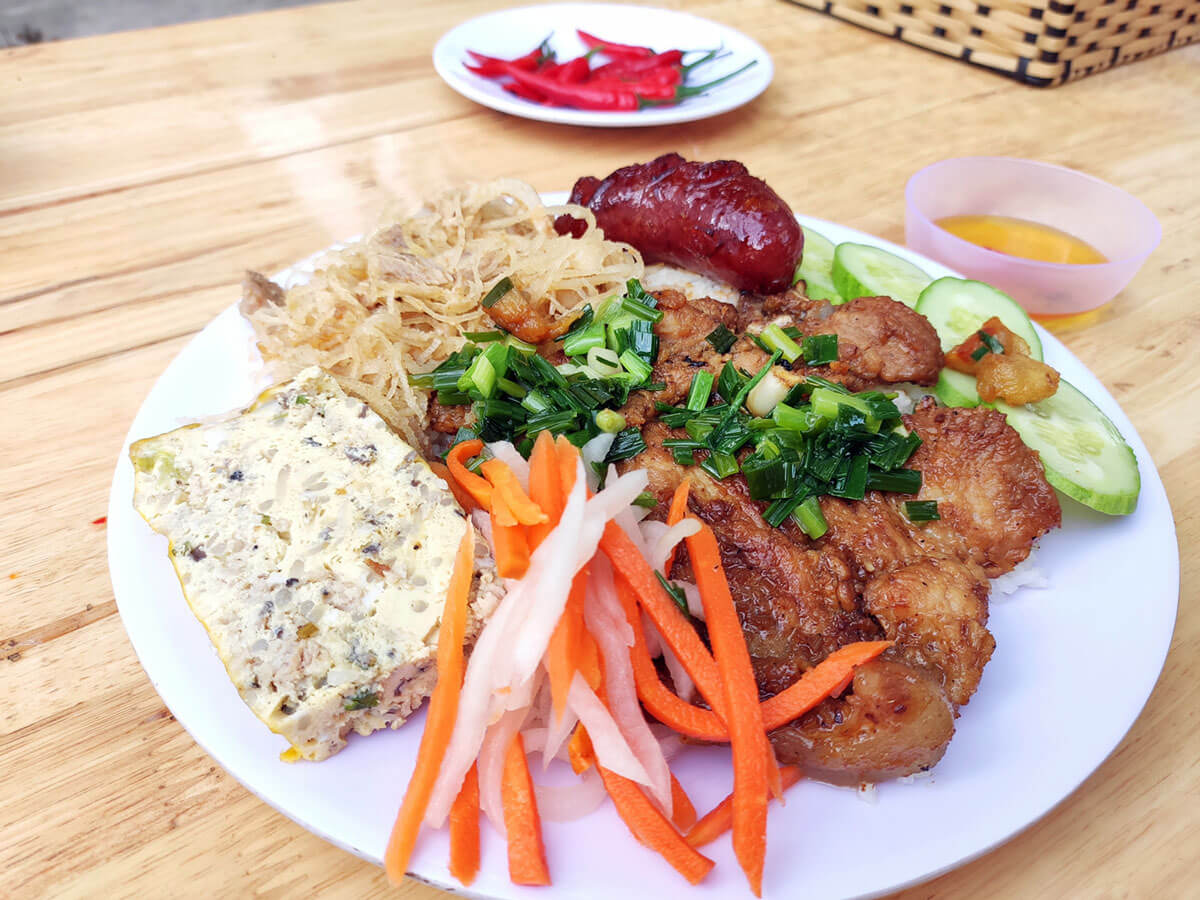
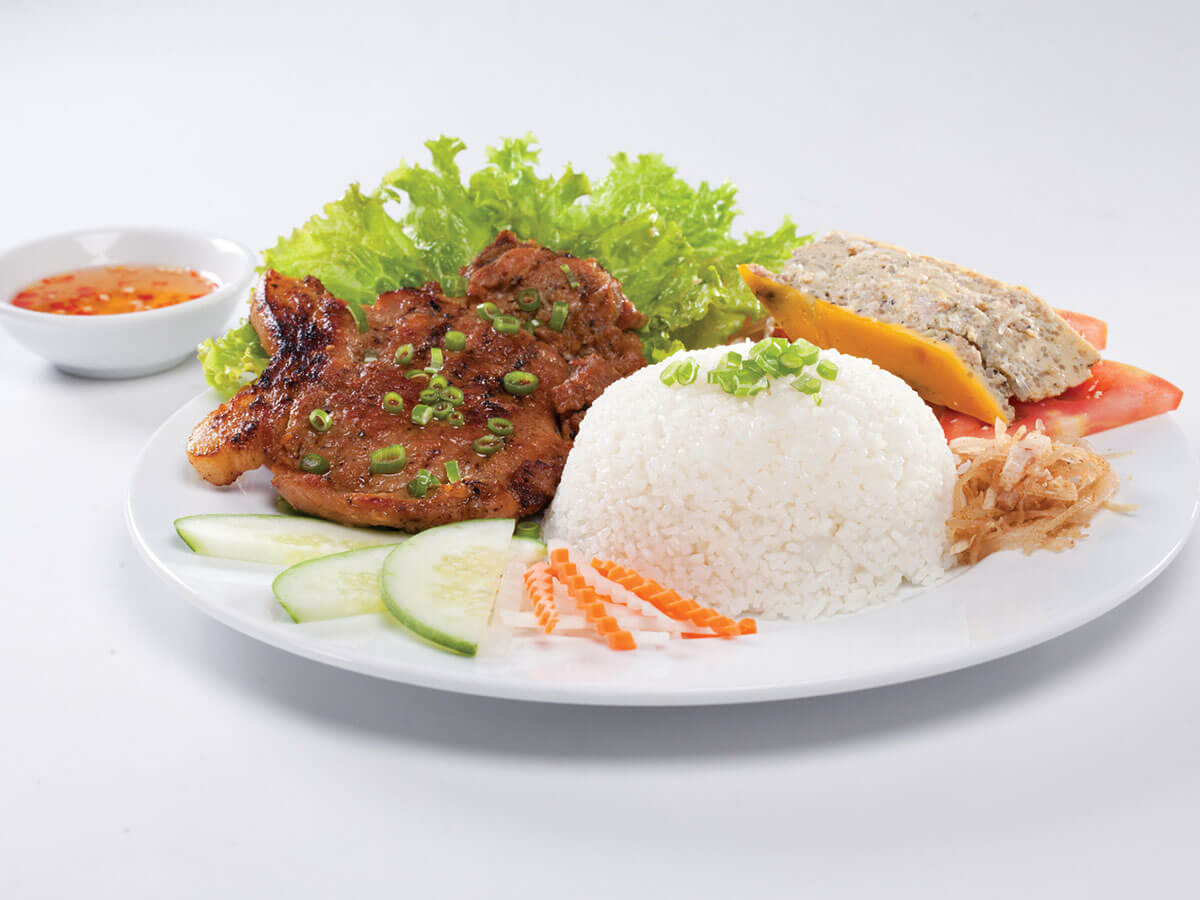
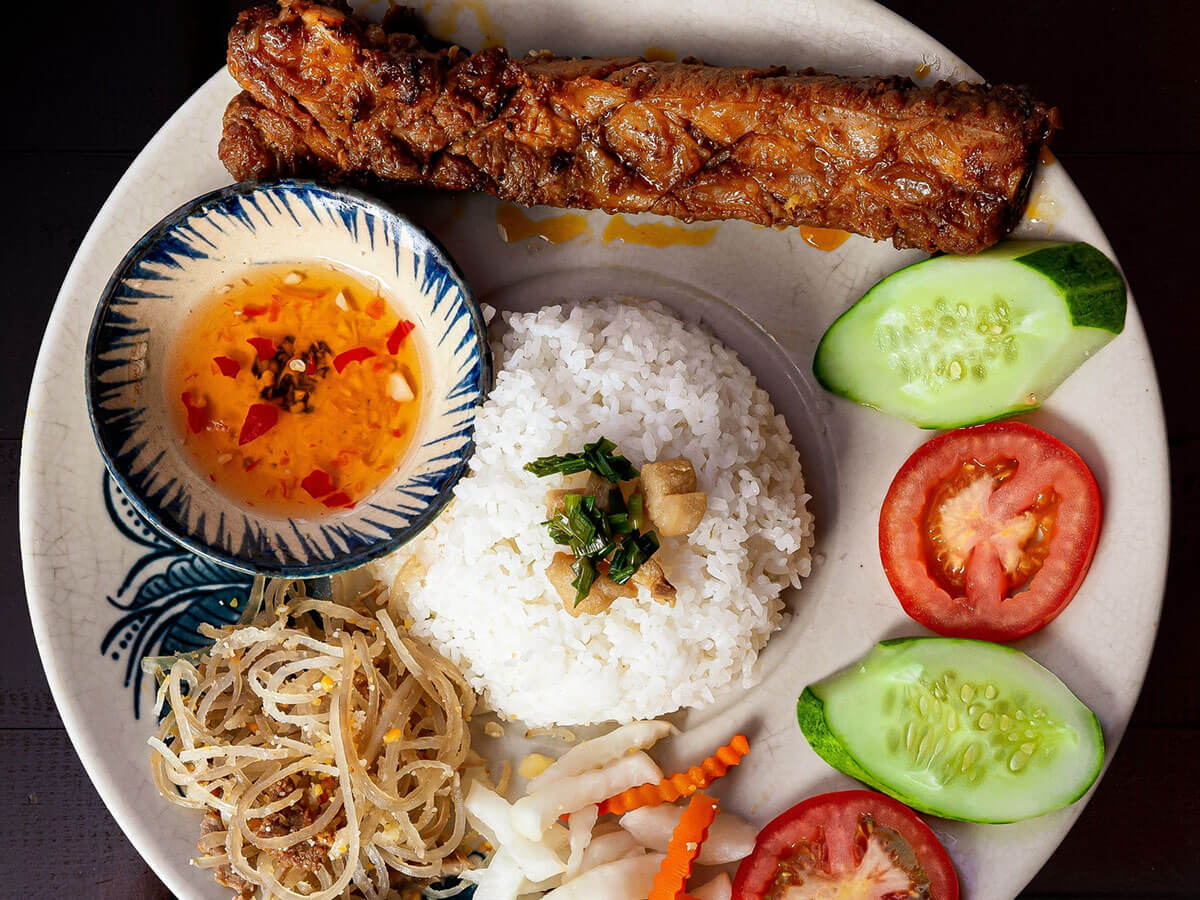
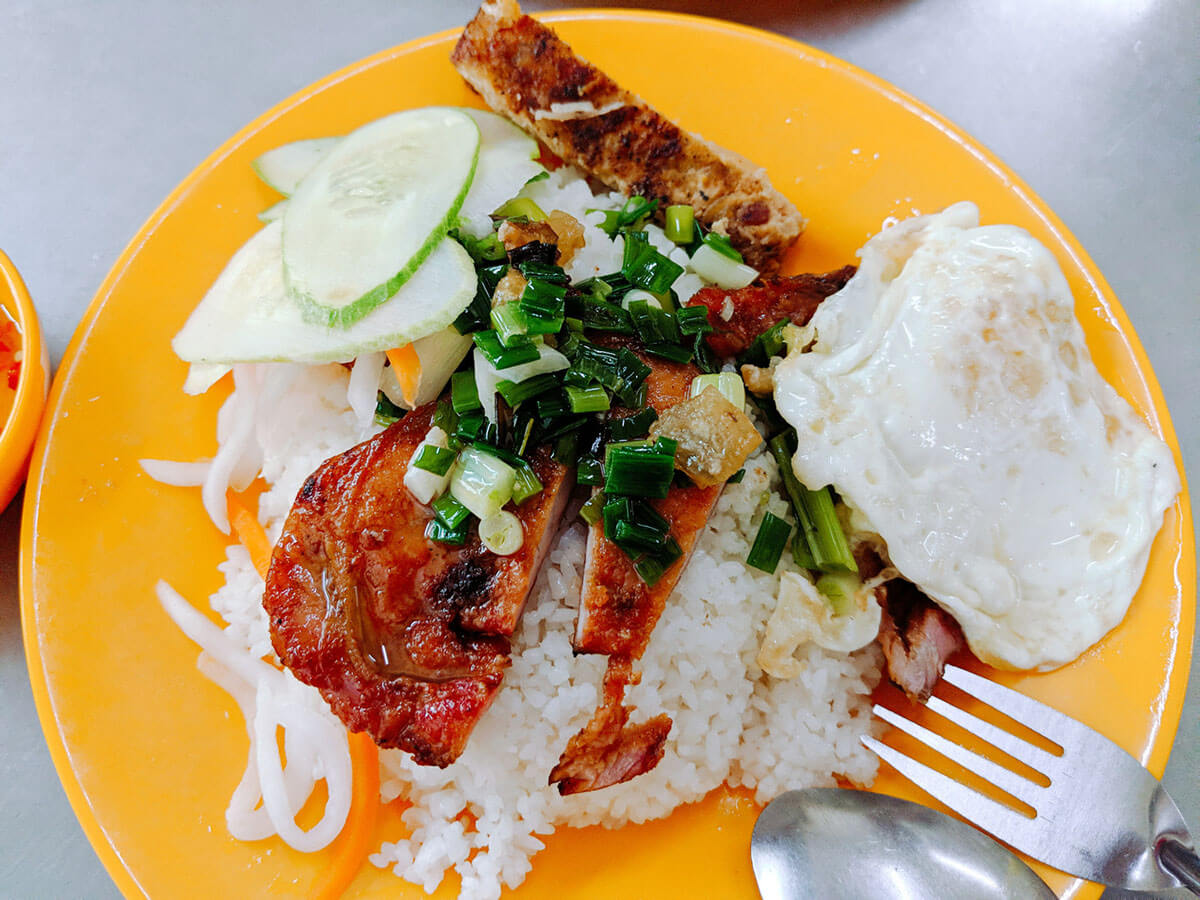

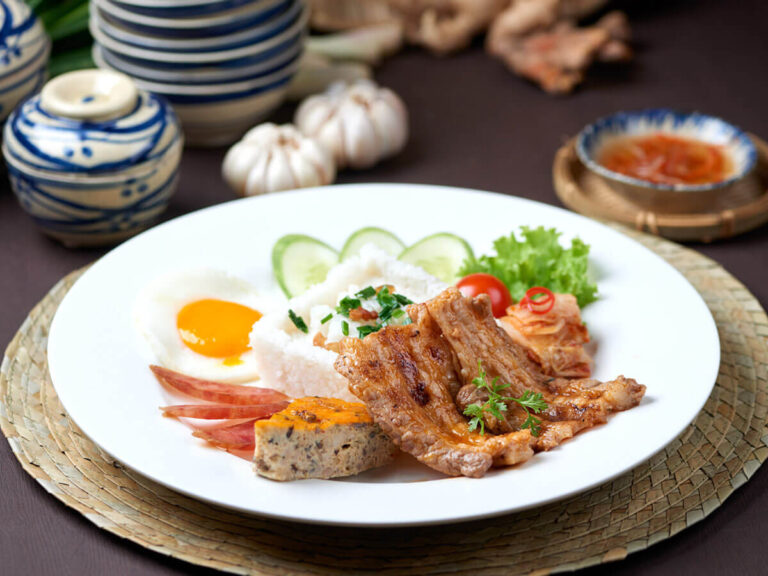

Truc Tran (Kris)
Senior Food Editor
Expertise
Home Cooking, Meal Planning, Recipe Development, Baking and Pastry, Food Editor, Cooking-video Maker, Vietnamese Food Evaluation Expert
Education
Truc Tran (Kris), an experienced food writer and editor, is great at exploring and describing global cuisines, from simple street food to fancy dining. In her writing, she skillfully mixes different flavors, cooking methods, and culinary traditions, showing the unique character of various cultures through their food and drinks. On azcuisines.com, Kris highlights her knowledge, especially in Asian cuisine and worldwide traditional dishes.